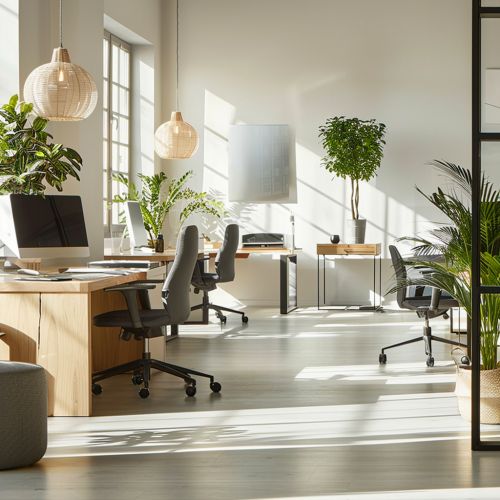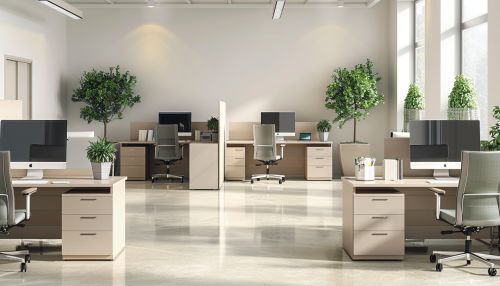Workplace
Introduction
The Workplace is an environment where people perform tasks related to their jobs. It can be a physical location, like an office or factory, or a virtual space, such as a remote workspace or home office. The nature of the workplace varies widely depending on the industry, the nature of the work, and the organizational culture.


Types of Workplaces
There are various types of workplaces, each with its own unique characteristics and requirements.
Office Spaces
Office spaces are the most common type of workplace. They are typically used by businesses in the service industry, such as finance, technology, and consulting. Office spaces can be located in a dedicated office building or within a larger complex. They are designed to facilitate communication, collaboration, and productivity among employees.
Industrial Workplaces
Industrial workplaces include factories, warehouses, and production facilities. These workplaces are characterized by the use of heavy machinery and equipment. They require stringent safety measures and regulations due to the potential risks and hazards associated with the nature of the work.
Retail Spaces
Retail spaces are workplaces where goods are sold directly to consumers. These include stores, supermarkets, and shopping malls. The layout and design of retail spaces are crucial in influencing consumer behavior and enhancing the shopping experience.
Remote Workplaces
Remote workplaces refer to work environments where employees can work from anywhere, typically from their homes. This type of workplace has become increasingly popular due to advancements in technology and the shift towards more flexible work arrangements.
Workplace Culture
Workplace culture refers to the shared values, beliefs, and practices within an organization. It influences how employees interact with each other and with the organization. A positive workplace culture can lead to increased employee engagement, productivity, and retention.
Elements of Workplace Culture
Workplace culture is shaped by various elements, including leadership style, organizational structure, policies and procedures, and the physical work environment.
Leadership Style
The leadership style of an organization's management plays a significant role in shaping workplace culture. Leaders set the tone for the organization, influencing the behavior and attitudes of their employees.
Organizational Structure
The organizational structure of a company also influences its workplace culture. A hierarchical structure may foster a culture of authority and formal relationships, while a flat structure may encourage a culture of collaboration and equality.
Policies and Procedures
Workplace culture is also shaped by the organization's policies and procedures. These guidelines dictate how work is performed and how employees are expected to behave.
Physical Work Environment
The physical work environment can also impact workplace culture. A well-designed and comfortable workspace can foster a positive and productive work culture.
Workplace Health and Safety
Workplace health and safety is a crucial aspect of any workplace. It involves the implementation of measures to prevent accidents and ensure the well-being of employees.
Occupational Safety
Occupational safety refers to the prevention of accidents and injuries in the workplace. This involves risk assessment, safety training, and the use of protective equipment.
Occupational Health
Occupational health focuses on the prevention and management of occupational diseases and work-related health issues. This includes ensuring a healthy work environment and promoting employee wellness.
Future of Workplaces
The future of workplaces is expected to be shaped by technological advancements, changing demographics, and evolving employee expectations.
Technological Advancements
Technological advancements are expected to transform workplaces. Automation, artificial intelligence, and remote work technologies are likely to redefine job roles and work processes.
Changing Demographics
Changing demographics in the workforce, such as the increasing presence of millennials and Generation Z, are likely to influence workplace trends. These generations value flexibility, work-life balance, and a purpose-driven work environment.
Evolving Employee Expectations
Evolving employee expectations are also expected to shape the future of workplaces. Employees are increasingly seeking meaningful work, opportunities for growth, and a supportive work culture.
